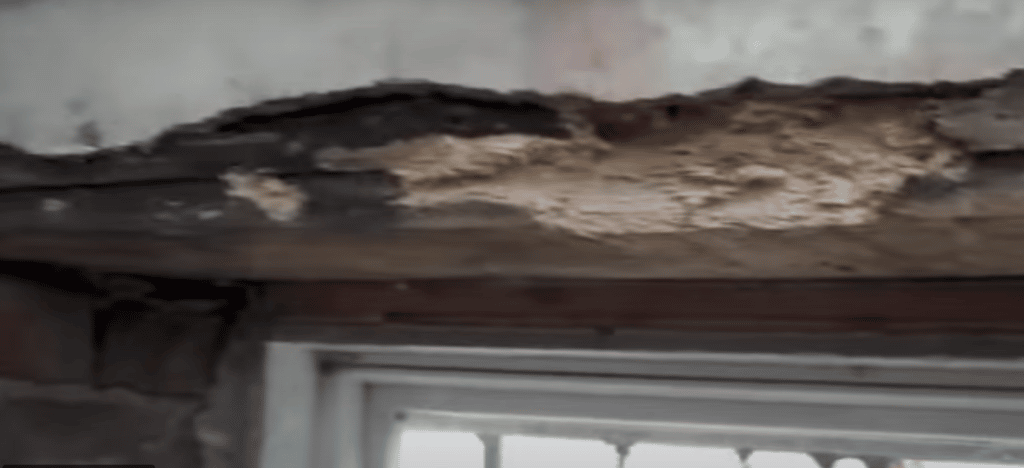Death Watch Beetle
Death Watch Beetle – what a name for a bug! The above video features structural timber (in this case a lintel over a window opening), severely attacked by Death Watch Beetle. We suppose, in a way the timber has been killed and the beetle murdered it. That’s not why this beetle has such a morbid name though.
Death watch Beetle’s emerge at the end of their life cycle to mate and hopefully (for them), lay more eggs. To attract a mate the male beetle has a habit of tapping his head on the surface of the wood. Ringing the dinner gong and flirting at the same time – genius!
It is said that when houses were quiet, because someone was on their deathbed, the sound in the background could be heard tap tap tap tap…. Hence the Death Watch name, which stuck.
This has some credence because in the old days most people died at home. In the weeks and days before grandads eventual demise – the house would be deathly quiet.
Read on for a deeper understanding of Death Watch Beetle, or call our timber experts for free advice now Leeds 265 2752 York 566577 or Sheffield 224 5121 or email us via our contact page
Death Watch Beetle was more common in the ‘old days’.
In addition to the above, death watch beetle was more common. This is because we used to grow and coppice a hell of a lot of oak. Forests were managed, but still there were lots of dead oak and oak off-cuts on the floor of the ancient woods. Dead, damp and rotting oak is this beetle’s idea of heaven. The most common rots in very damp wood outside, are wet rots. Most of these wet rots are in the family known as ‘White Rots’.
This is why Death Watch Beetle and the Stringy Oak Rot Donkioporia expansa, have such a lovely relationship. They evolved with each other, long before we learned to use wood for building.
The beetles will lay eggs on the damp and rotting wood. They’ve evolved to sniff it out. Death Watch Beetles tend to climb into any natural cracks (known as shakes) in the wood. Oak will develop these, especially if the felled wood is dried too quickly. It also happened in roofs, where a freshly constructed roof full of damp green oak gets warm. The wood shrinks and warps and cracks. This is perfect for death watch beetles and, for spores (which are everywhere), to germinate in the wood itself.
In the above video you can see both the white rot and it’s best friend death watch beetle. Together they have destroyed the timber lintel (along with lots of powder post beetles and common furniture beetle too, as it happens).
Dry oak doesn’t rot.
Converted oak is actually very resistant to rot and insect infestation. However, if there is sapwood present and a damp problem, spores will germinate. This is particularly common where large section oak beams or in-built members, like lintels and wall plates get wet. The embedment in thick masonry means that there is little draft and no sunshine. The wood gets wet and stays wet. Ideal for rot to develop. Furthermore, if wet rot develops in the heartwood, then even this becomes perishable and eminently edible for death watch beetles. Large oak beams are more common in old farmhouses, barns, cottages and historic and listed buildings; no surprise there. Our timber and damp surveyors spend much of their time looking for sources of moisture. Dry oak doesn’t rot and wont be attacked by Death Watch beetle to any great extent.
Specification for repair and remedial work for Death Watch Beetle is highly specialised. Inspecting very thick beams, or timber partially encased in masonry takes skill. Sometimes it required the use of our specialised micro-drilling equipment.
We are Yorkshire’s specialist when it comes to this pest. Our surveyors are all CSRT qualified and real experts. They know their Dry Rot, Death watch beetle and Wood boring weevil too. Call us for free advice or to book a survey Leeds 265 2752 York 566577 or Sheffield 224 5121 or email us via our contact page

